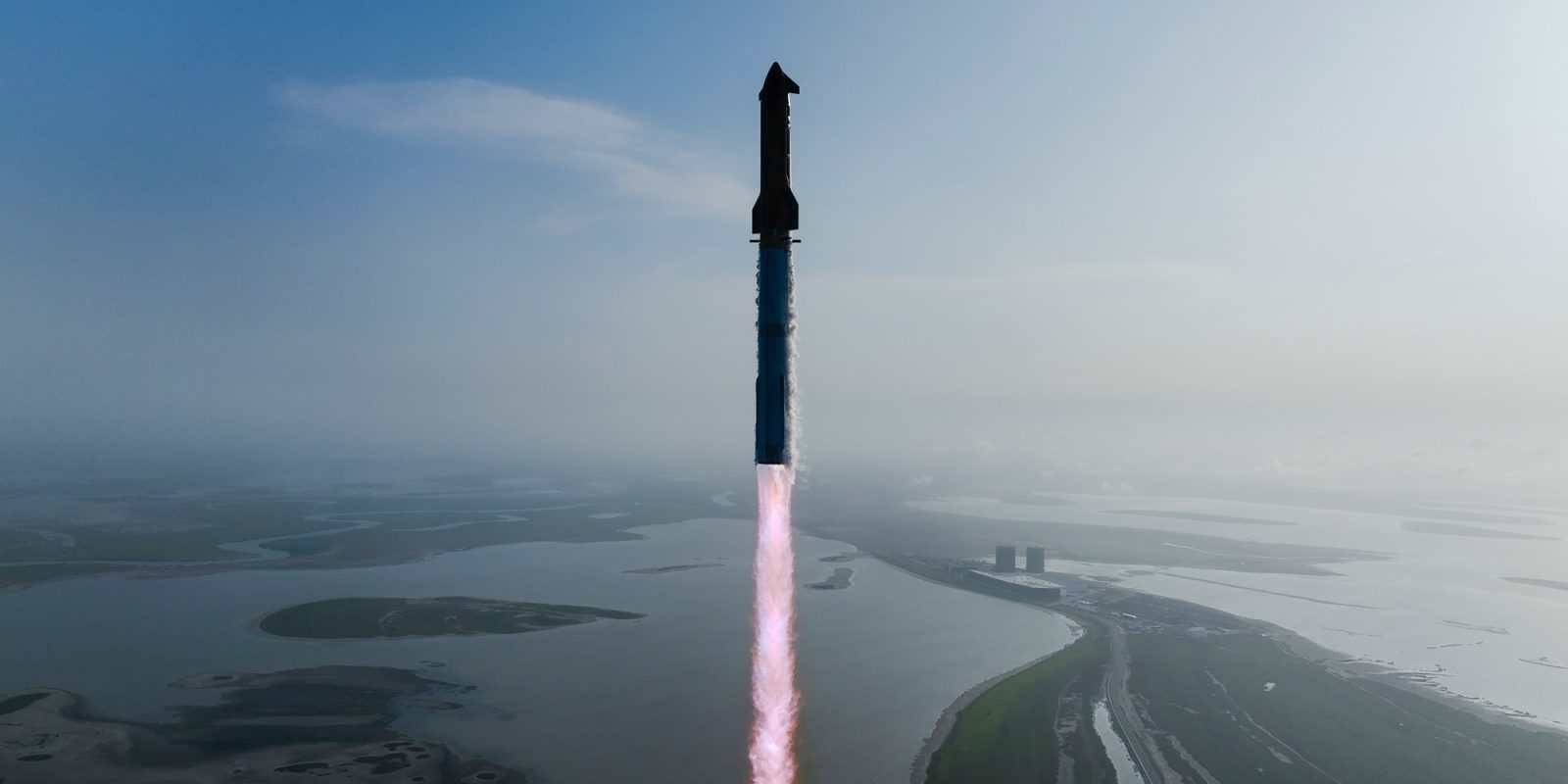
Last night, SpaceX launched its ninth Starship rocket from Starbase, Texas. While this time the rocket made it further than the previous two, it was far from perfect. So, was the mission successful or another straight-up failure?
Don’t bother coming home. Booster 14, a first-time reflyer for the Starship program, performed flawlessly during the ascent of Starship Flight 9. However, it was destined not to return, as the mission profile stated it would perform a controlled splashdown out in the Gulf of Mexico.
While ascent and reentry looked to be good, it suffered a similar failure to what we saw on the early Super Heavy splashdowns: an explosion right before landing. What could have caused this is unknown, but it wasn’t 100% a surprise; Booster 14 is still an early development vehicle, and reflying it could have caused any number of things to go wrong.
This is a classic case of “more data is more good.” So for this segment of the launch, Flight 9 was much closer to success than failure.
Block 2 to space. What was the much more important part of the mission was the ascent of Ship 35 into space and over to the Indian Ocean for its splashdown. Both Starship Flights 7 and 8 suffered failures during similar points of their flights, but according to SpaceX, they were unrelated.
So, as Ship 35 blew past the first stage shutdown milestone its predecessors never saw, SpaceX’s first Block 2 Starship went further than it ever had before. A big win for the company to have solved those issues.
This makes Ship 35’s ascent a success in my eyes.
Denied. A key test of the vehicle was the deployment of its dummy Starlink satellites into its suborbital trajectory. While it has no value in developing the rocket into a fully reusable rocket, it is a useful step for future flights where SpaceX hopes to deploy its new Gen 3 Starlink satellites from it, offsetting Starship’s development costs.
However, the payload bay door was unable to open all the way, resulting in the abort of the dummy sats deployment. This marked SpaceX’s third failure to complete this test.
Out of control. Things began to fall apart quickly once Ship 35’s main engine shut down. The ship quickly began to spin out of control, something we’ve seen before. This resulted in the second, and more crucial test, being bypassed.
That test was the relight of a single Raptor engine while in space. This is an extremely important test to verify Raptor’s ability to operate in space so that on future orbital missions it has the ability to deorbit.
Because of Starship’s inability to control itself, SpaceX made the decision to “pacify the spacecraft, venting its propellant and other gases overboard and letting Ship 35 reenter uncontrolled.
Ship 35 still reentered over its restricted airspace and over the Indian Ocean, not causing any additional risk to pilots or boaters below. Before it could reach the ocean’s surface, the Starship exploded, being caught by onlookers in Africa.
SpaceX states that the mission gained valuable data that will be used to make Starship more reliable in the future. In that case, the mission was a success. But this also means another likely repeat of the same mission on Flight 10 and an investigation into what went wrong.
This could delay the program by weeks at best, or by months at worst. This also further stresses NASA’s Artemis program, as Starship is a required piece of the puzzle to land astronauts on the lunar surface for Artemis 3 in 2027.
This puts Starship 9 right in the middle of success and failure, like many of its previous flights.
FTC: We use income earning auto affiliate links. More.




Comments